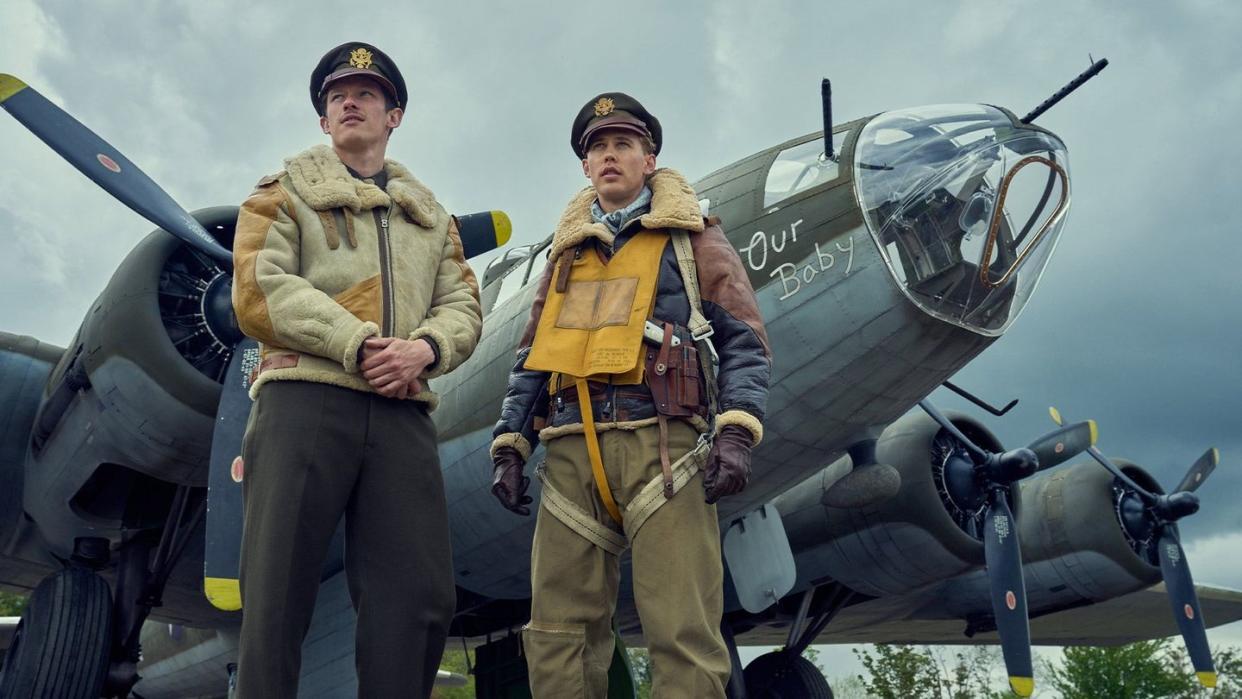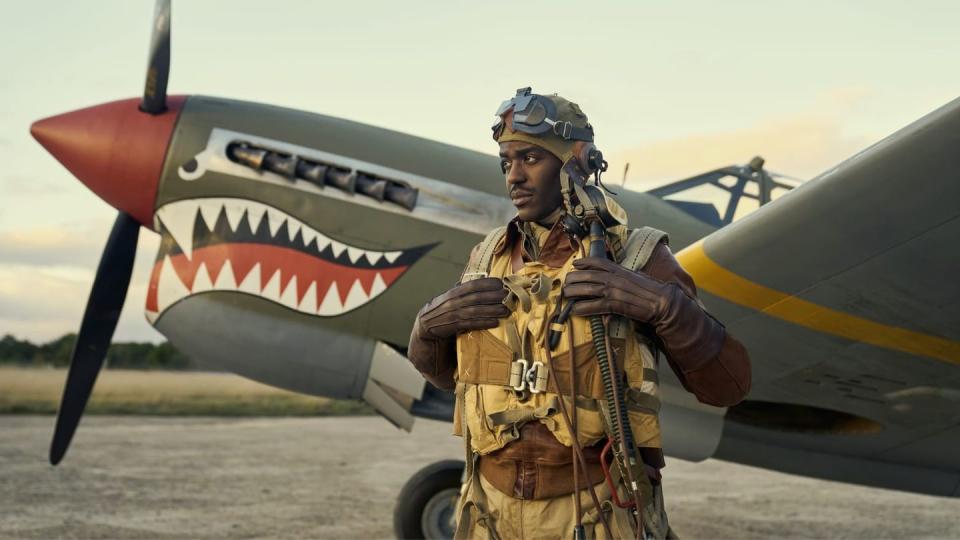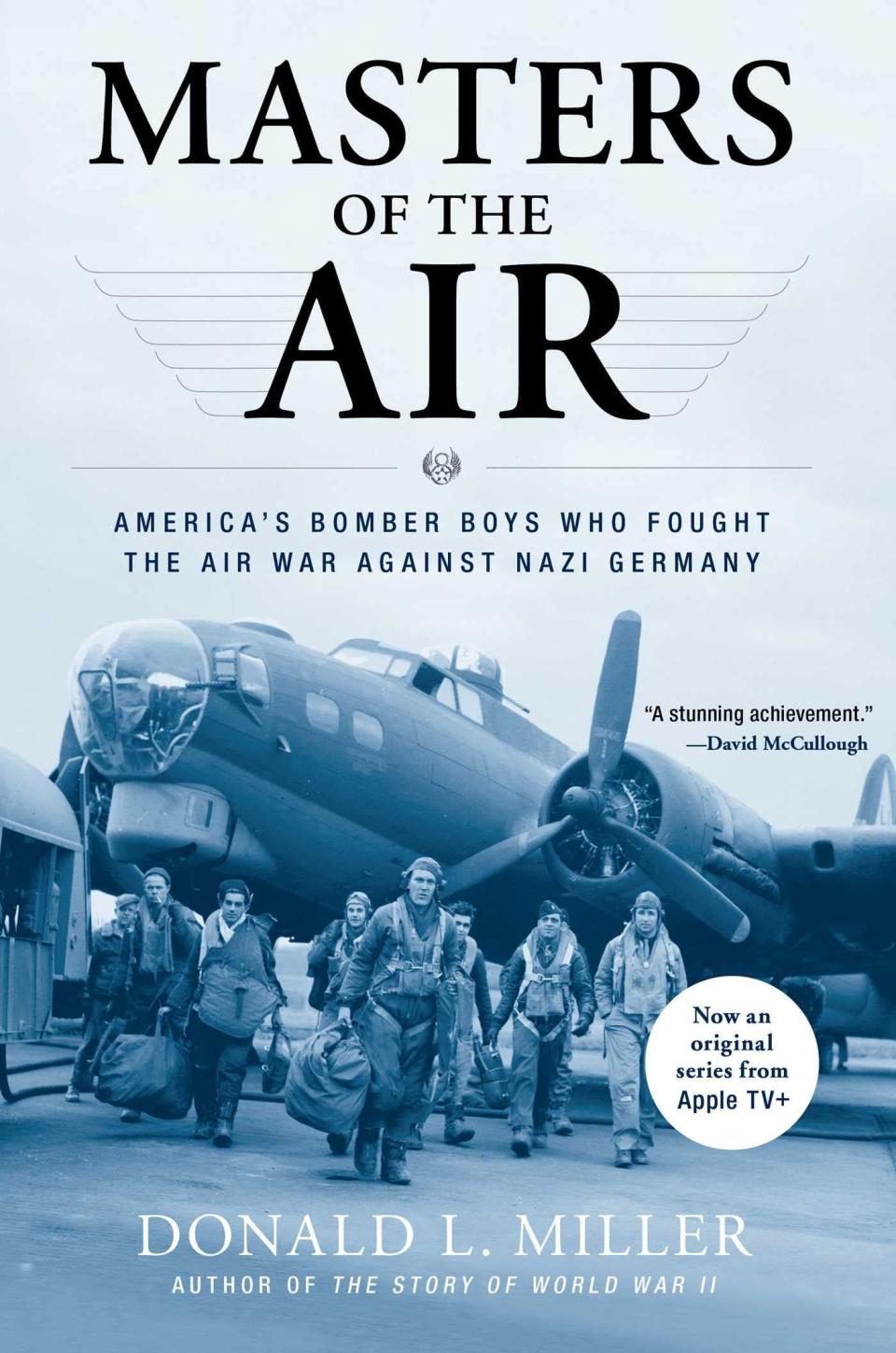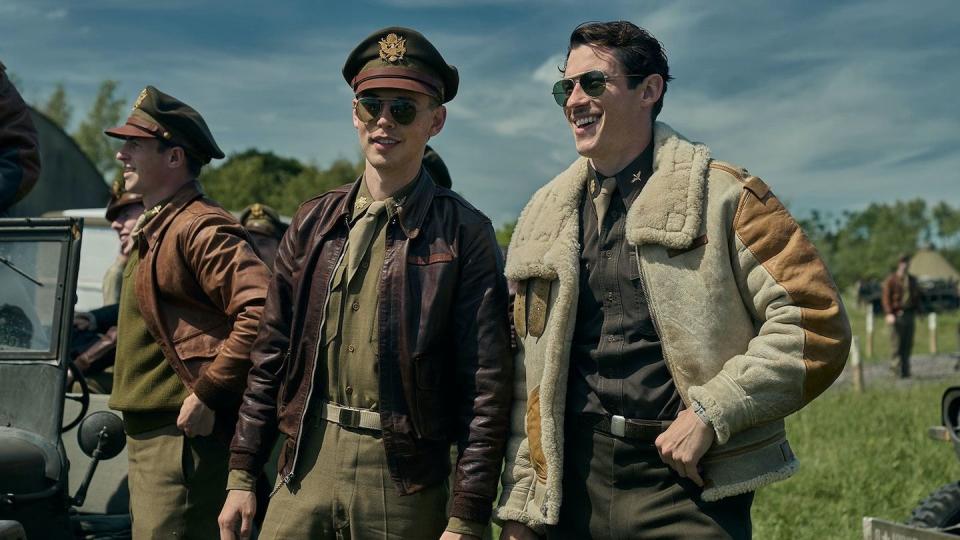The Triumphant and Tragic True Story of ‘Masters of the Air’

- Oops!Something went wrong.Please try again later.
"Hearst Magazines and Yahoo may earn commission or revenue on some items through these links."
YOUR DAD'S NEW favorite TV show just hit Apple TV+. Masters of the Air, based on Donald L. Miller’s 2007 book, Masters of the Air: America's Bomber Boys Who Fought the Air War Against Nazi Germany, arrives from the same trio of executive producers—Tom Hanks, Steven Spielberg, and Gary Goetzman—as HBO's landmark series Band of Brothers and The Pacific.
Turning its gaze to World War II aerial combat, the series just so happens to feature an expansive cast with some of pop culture’s best talents, including Austin Butler, Callum Turner, Anthony Boyle, and Barry Keoghan, alongside dozens of other performers you’ve likely seen in television or film. That’s to say nothing of the creative talent directing the show, which includes True Detective and No Time to Die’s Cary Joji Fukunaga, Captain Marvel’s Anna Boden & Ryan Fleck, Mudbound’s Dee Rees, and Band of Brothers stalwart Tim Van Patten.
Masters of the Air follows the 100th Bomb Group, aka the Bloody Hundredth, throughout its European campaign and is very much in the triumphant and tragic spirit of its sister series. If you’re watching the show and want more context about the group, here’s our guide to the real-life history behind one of World War II’s most important aerial groups.
What is the history of the 100th Bomb Group before World War II?
While it would take a little while for the 100th Bombardment Group—or as we’ll call it from this point forward, the 100th—to make it over to the World War II theater, the Army Air Force initially activated the group on June 1, 1942, roughly six months or so after the bombing of Pearl Harbor. From there, it remained unmanned until early November 1942, when it received its first handful of aircrews and B-17, aka the Flying Fortress, from the Boeing production plant.
In May 1943, the 100th departed from New York to Thorpe Abbotts, Norfolk, in England, where they were eventually stationed throughout WWII.

What is the history of the 100th Bomb Group during World War II?
The 100th flew its first combat mission on June 25, 1943, as part of an extensive campaign by the U.S. and the Eighth Air Force, performing an area bombing of the Bremen U-Boat Yards. Area bombing is a strategy (pulled from the German Blitz on Britain) that involved attacking and destroying residential districts to weaken enemy morale. The Eighth helped the RAF by attacking industrial and military facilities during the daytime.

Masters of the Air: America's Bomber Boys Who Fought the Air War Against Nazi Germany
amazon.com
$18.81
The 100th, in particular, took a beating during these attacks, earning the unflattering nickname of “Bloody Hundredth” because of the number of losses it endured. To wit: a raid in mid-October of ‘43 saw 12 of the 13 bombers that made it into the combat zone were shot down; the one remaining bomber that returned to base sustained severe body damage and saw injuries to the crew.
Amongst the carnage, there was glory. The 100th received two Distinguished Unit Citations—one for attacking a German aircraft factory in Regensburg in August 1943, and another in March 1944 for a series of bombings on Berlin. The 100th also assisted with the Battle of the Bludge from December of ‘44 through January 1945, which saw the group rewarded with the French Croix de Guerre with Palm.
After the 100th’s final combat mission in April 1945, the group was responsible for airdropping food throughout the Netherlands before transporting former French POWs back to France. The remaining members of the 100th flew back to the United States in December 1945, four days before Christmas.

What is the history of the 100th Bomb Group after World War II?
The 100th was reactivated in 1953 as part of the Strategic Air Command and remained active until 1966, mostly as a standby due to Cold War tensions. The 100th would eventually shift its focus to becoming a group responsible for refueling efforts in the United Kingdom. The 100th Air Refueling Wing managed the European Tanker Trask Force from the early 1990s until 1998. It is currently “the only U.S. tanker wing assigned to Europe and Africa refueling U.S. and partner nation aircraft over a span of more than 20 million square miles employing the KC-135 Stratotanker aircraft,” according to a fact sheet provided on the Royal Air Force’s website. It remains in work today.
You Might Also Like

